Giving Back in 2019: SGU Student Organizations Contributed Valuable Funds and Expertise to Host Country
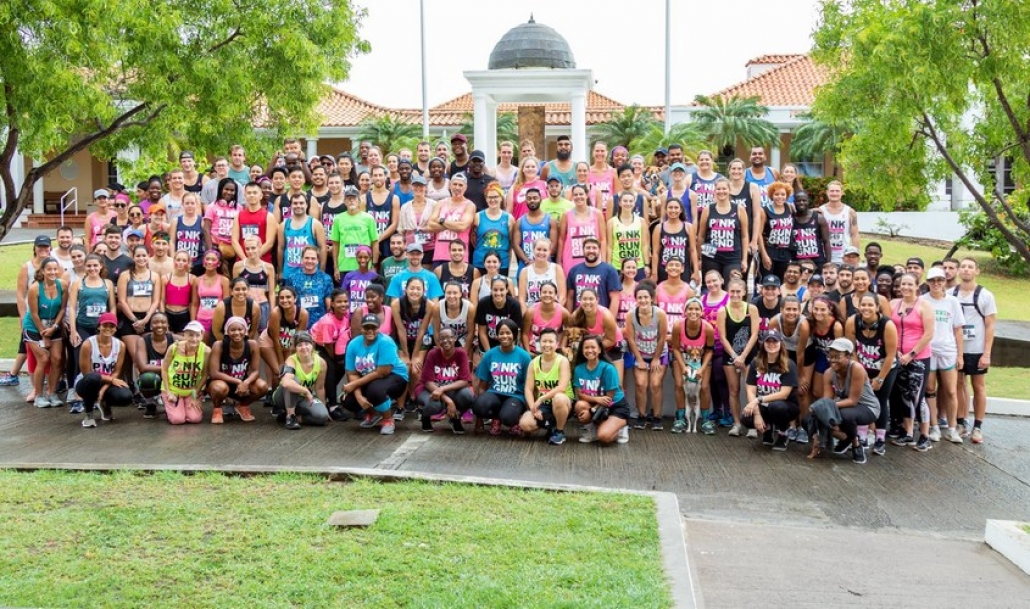 Since St. George’s University opened more than 40 years ago, Grenada has been a second home for SGU students who have descended upon the True Blue peninsula from countries all over the world. Collectively, through the more than 60 student organizations on campus, these students have given back to the country that has welcomed them warmly.
Since St. George’s University opened more than 40 years ago, Grenada has been a second home for SGU students who have descended upon the True Blue peninsula from countries all over the world. Collectively, through the more than 60 student organizations on campus, these students have given back to the country that has welcomed them warmly.
The connection between a student body and the community was clear in 2019. In addition to promoting and developing their specific club interests, these organizations were extensively involved in more than 1,100 events and volunteering over 9,000 hours of their time, benefitting the people and animals of Grenada through the donation of funds, supplies, and services, according to SGU’s 2019 Student Organization Report.
“Grenada and its people have been very kind to us as the host island of our institution so there’s a very strong bond between the students of the University and the community at large,” said Dr. C.V. Rao, dean of students at SGU. “Whether it’s raising funds for the Grenada General Hospital or donating to the elderly and orphanages on the island, students have an overwhelming desire to give back to the country helping them to receive their medical and veterinary education.”
Among the wide range of active student groups was Women in Medicine, which advocates for the interests of women physicians-in-training and promotes women’s health. Over the course of the year, the organization raised approximately EC$18,000 for the Grenada Cancer Society and contributed more than 900 service hours through health fairs and pap smear clinics on the island.
Tropical showers couldn’t stop the more than 100 participants who came out for WiM’s annual 5k Pink Run and fundraiser in November, where students, faculty, staff—and pets—ran, jogged, and walked to raise money for the Grenada Cancer Society. In addition, after the run, WiM faculty and students provided cervical cancer screenings at the University clinic—all part of an ongoing effort to enhance the quality of care for women battling reproductive cancers in Grenada.
“Students have an overwhelming desire to give back to the country helping them to receive their medical and veterinary education.”
The School of Medicine Surgery Club raised and donated a total of EC$6,000 to various organizations, including the Grenada General Hospital, Mt. Gay Psychiatric Hospital, and the Fund for the Orphans and Elderly. The organization, which provides students an opportunity to learn suturing techniques as well as observing surgeries in the local hospital, counts nearly 500 students as part of its constituency.
“We are extremely grateful to be given the opportunity to come to a country that has opened their arms to us to learn medicine, and we want to give back as much as we can,” said Juxhesta Cakrani, vice president of finance for SOM’s Surgery Club and a fifth-term medical student.
With more than 800 members, SGU’s chapter of the American Medical Student Association (AMSA), promotes active improvement in medical education, world healthcare delivery, and the enhancement of social, moral, and ethical obligations of the medical profession. Each semester, the chapter hosts health fairs, including its annual One Health One Medicine Health Fair, where student members visit the island’s communities to provide free healthcare to those in need, including check-ups and diagnostic health services, as well as education on mental health and healthy eating. In total, the group donated in excess of 2,300 of community service hours in 2019 to benefit the Grenadian people, the report noted.
Given the drastic need for life-saving blood donations on the island, SGU’s AMSA chapter also organized two on-campus blood drives this fall to benefit Grenada General Hospital. And through its Valentine’s Day Date Auction, its biggest and popular annual fundraising event, the chapter was able to donate proceeds of EC$16,000 to the Grenada Heart Foundation, which provides lifesaving interventional cardiac care to those in need, especially children.
“Grenada is very underserved—not everyone has access to transportation or the finances to be able to get the healthcare they need,” said Tasha Phillips-Wilson, SGU AMSA’s chapter president for the fall 2019 semester and a third-year med student. “We go out into the community—we set up tents and tables—and students are able to treat patients. The communities are quite grateful and appreciative for that.”
For the students partaking in activities, they are able to apply classroom-learned concepts to real medical situations. “Students get to practice clinical skills and these events are a great opportunity to work on the patient-physician interaction,” added Mrs. Phillips-Wilson.
The report noted several other student organizations that volunteered significant amounts of time in 2019, including:
- The Significant Others Organization put in nearly 2,500 of service hours through various outreach and aid activities at the Grenada Society for the Prevention of Cruelty to Animals, the Dorothy Hopkins Home for the Disabled, and Queen Elizabeth Home for Children.
- The Orphanage Students Organization spent more than 750 hours with children in need from the Bel Air Children’s Home and the Queen Elizabeth Home for Children, taking them to the beach and other enjoying other activities with the children.
- The Pediatrics Club clocked over 600 volunteer hours through health fairs and clinic days at the Bel Air Children’s Home and the Queen Elizabeth Home for Children.
Students also raised funds for and dedicated their services to the animals on the island of Grenada.
- Organizations including SGU’s Angels in Armor (AAARF), Feral Cat Project (FCP), and Spay Neuter Pot Hounds (SNP) raised more than EC$30,000 for SGU’s Small Animal Clinic (SAC), which serves the people of Grenada and their pets. These organizations utilized a range of fundraising activities such as sales, raffles, cocktails, and trivia nights.
- Student members of the American Veterinary Medical Association chapter volunteered nearly 1,500 hours to various veterinary outreach initiatives and SGU’s One Health One Medicine Clinics.
- SGU’s Exotic and Wildlife Society volunteered more than 2,300 hours to various marine and terrestrial wildlife protection activities around Grenada.
Being a part of these organizations not only helps students hone their clinical skills but teaches many of those who become officers the value of leadership, how to budget, and other managerial skills, added Dr. Rao.
“Some organizations have a budget and it is our expectation that they generate funds for their own organization, and they do it,” he said. “These are additional skills learned that will come in handy as they climb the ladder of their careers.”
Added Dr. Rao: “We are proud of our student organizations and all they have accomplished in 2019. We are looking forward to another year of strong community service and participation from our student groups.”
– Laurie Chartorynsky


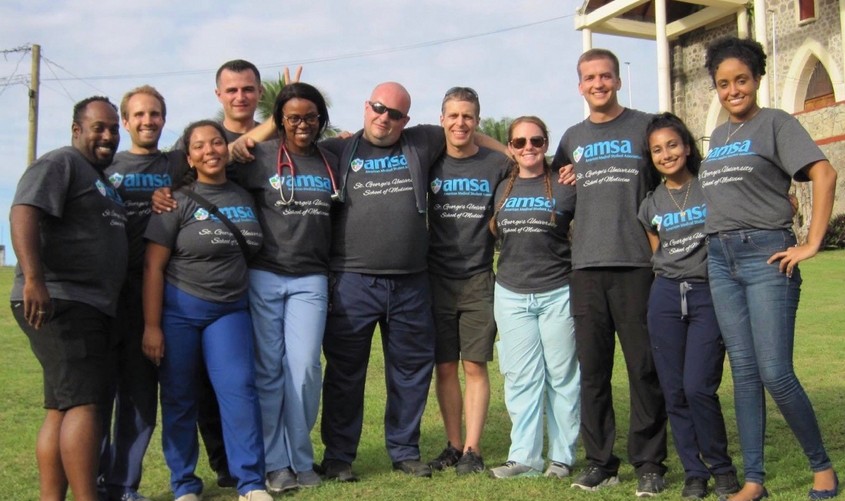


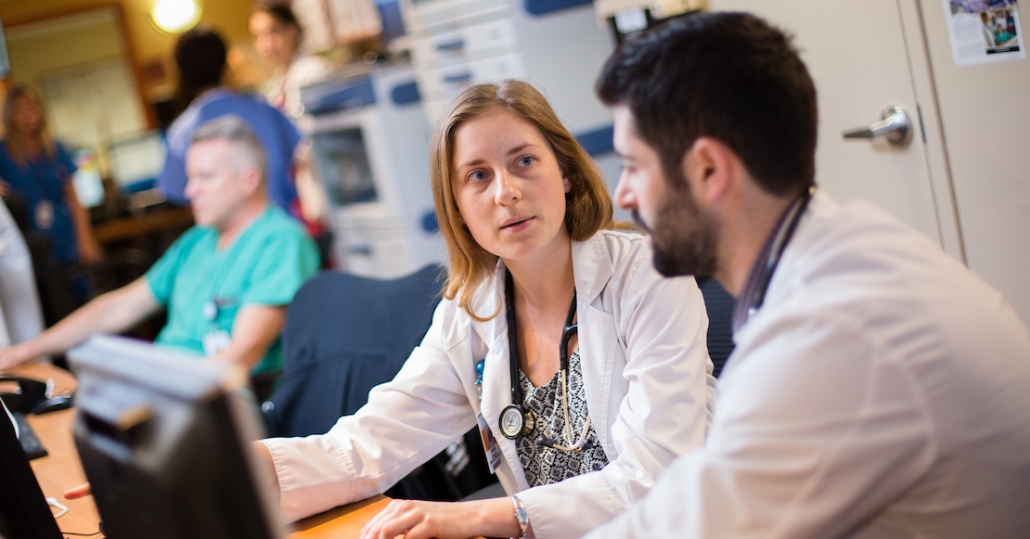
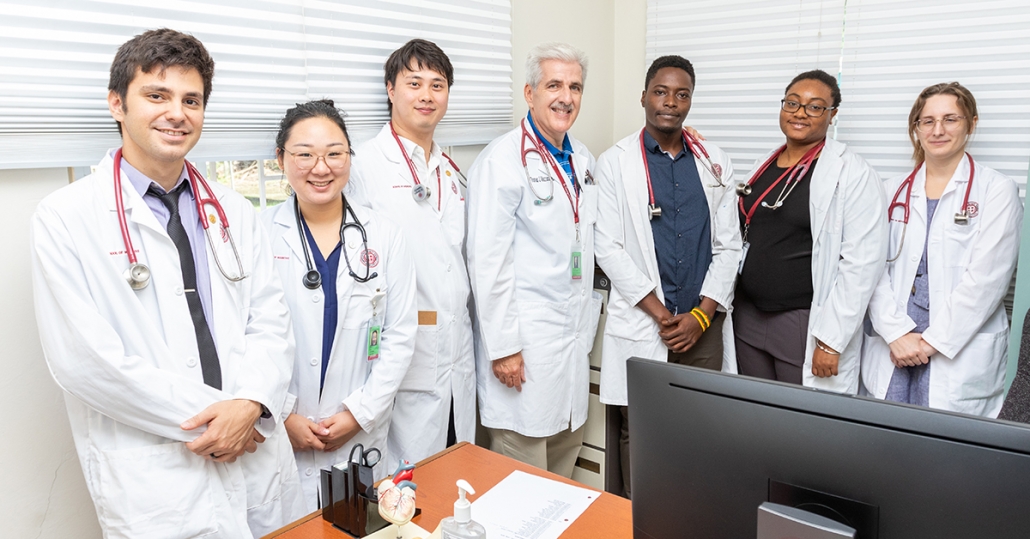


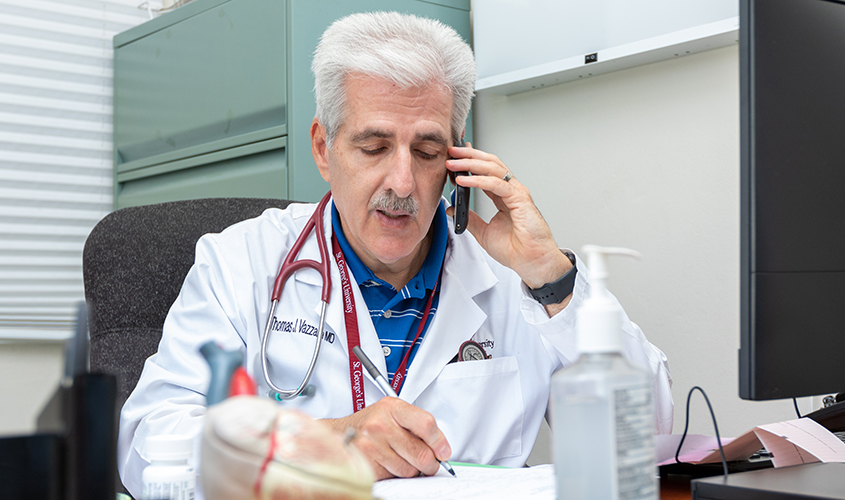






 “The book project started three years ago,” Dr. Loukas said. “Dr. Burns and I wanted to combine anatomy within ultrasound, so that students from other courses such as physiology or pathology could understand how we use ultrasound. This forms the basis for any type of student or even resident to start diagnosing different conditions.
“The book project started three years ago,” Dr. Loukas said. “Dr. Burns and I wanted to combine anatomy within ultrasound, so that students from other courses such as physiology or pathology could understand how we use ultrasound. This forms the basis for any type of student or even resident to start diagnosing different conditions.